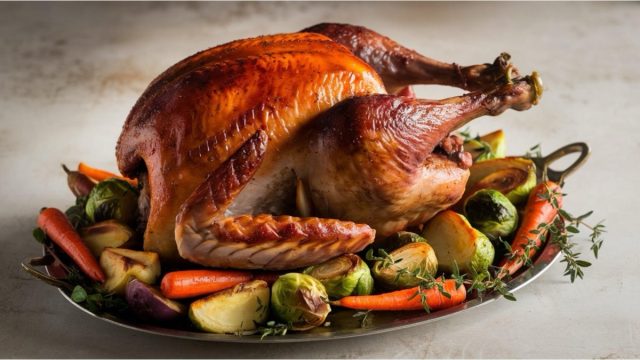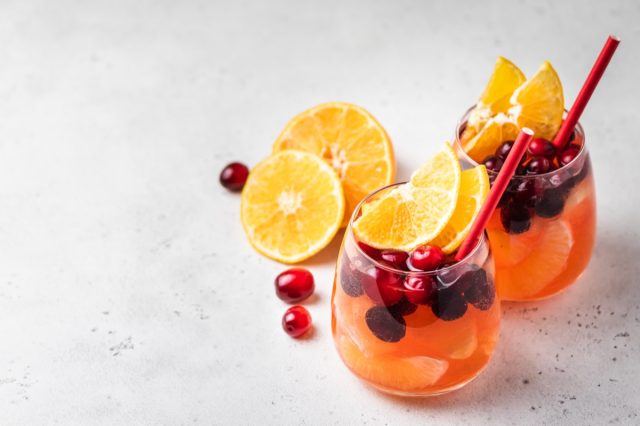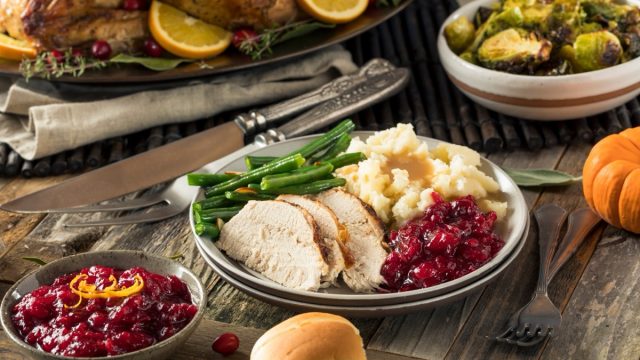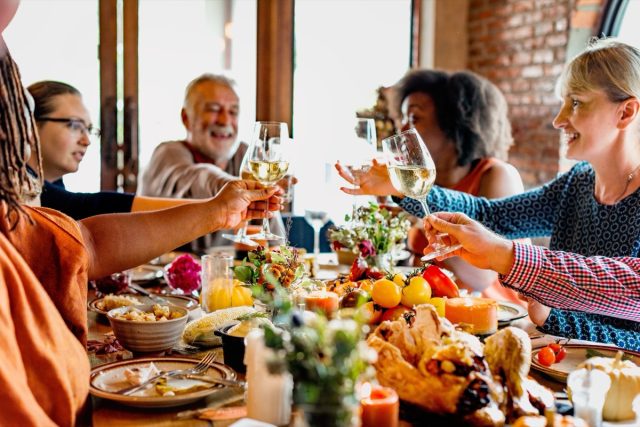Nutritionists Share 10 Tips for Staying Slim Over Thanksgiving
Are you afraid that Thanksgiving will derail your diet? Meg Seibert is a health and wellness enthusiast who regularly shares tips and tricks on how to stay in shape. In a new Instagram post, she reveals her hacks for staying healthy over the holidays. "Here are some tips to have a great Thanksgiving," she says in the Instagram post. How can you have the healthiest holiday possible? Here are her top tips and also a few more from the American Heart Association.
You Don't Need to Avoid Any Food
Her first tip? "These are the foods you should avoid: None of them!" she says. "Thanksgiving is not a day to restrict yourself from the foods you enjoy. Eat the foods you love in moderation! Have the Turkey, the rolls, the pie… and remember, one day of eating like that will not set you back from your goals!"
Exercise
Rise and exercise on the holiday. "Get in a workout in the morning! Make it a fun, Thanksgiving-themed workout!" Meg says in her post.
Hydrate
She also encourages hydration. "Start your day with some water- get ahead!" she writes. According to the Mayo Clinic, hydration is important for a variety of reasons. Water helps get rid of waste through urination, perspiration, and bowel movements, keeps your temperature normal, lubricates and cushions joints, and helps protect sensitive tissues – and lots of experts maintain drinking more water will help fill you up, so you will end up eating less.
RELATED: 10 Simple Food Rules That Make Losing Weight Faster and Easier
Prioritize Protein (Turkey)

She also suggests sticking to lots of protein. "Prioritize your protein!" How much protein is in your bird? A one-ounce serving boasts 8 ounces. According to clinical trials, consuming more protein than the recommended dietary allowance not only reduces body weight (BW) but also enhances body composition by decreasing fat mass while preserving fat-free mass (FFM) in both low-calorie and standard-calorie diets.
Go For a Walk Post Feast

Looking for something to do after your feast? Get your steps in. "Take a walk after you eat your Thanksgiving meal! You will feel so much better!" she says. Going for a daily walk can be a game changer in terms of exercise, especially at a brisk speed. One study published in JAMA Internal Medicine found that walking at a brisk pace for about 30 minutes a day led to a reduced risk of heart disease, cancer, dementia, and death, compared with walking a similar number of steps but at a slower pace.
RELATED: The 5 Biggest Mistakes People Make When Trying to Cut Back on Sugar
Don't Skip Dessert

Debating whether you should indulge in that slice of pumpkin pie? Just do it, she says! "Don't skip the dessert… life is too short," she says.
Eat Breakfast

Krystal Dunham, a registered dietitian nutritionist in Tulsa, Oklahoma, recommends filling up with a nutritious breakfast on Thanksgiving morning. "A lot of people get into a habit on holidays of saving room for a big meal," she said. "But a lot of times when we're doing that, we're showing up to a meal over-hungry. So, then we end up eating past the point of comfort, and we're miserable for the rest of the evening." She suggests having a bowl of cereal or oatmeal with some fruit or granola and low-fat or nonfat yogurt high in protein – "helps us make more intentional decisions throughout the day," she said.
Avoid or Reduce Alcohol Intake

You might also want to avoid alcohol, suggests Dr. Colleen Spees, an associate professor of medical dietetics at Ohio State University College of Medicine in Columbus. Once people start drinking, "their inhibitions go out the door, often along with health behaviors," she says. She recommends diluting spirits or making spritzers.
RELATED: 8 Tips to Make Losing Weight Feel Effortless, From Proven Experts
Focus on Your Whole Plate

Many opt for white-meat turkey because it has less fat. "People think, 'Oh, I'm choosing a healthy option,' and then they throw gravy all over it, adding saturated fat and sodium," Spees said. Focus on the whole plate instead and keep portions reasonable. And, it's okay to indulge in salty and fatty foods. "It's OK to have a few bites," Spees said. "You don't need a huge serving."
Celebrate!

The most important thing is celebrating. "I think joy is a great component to a plate, especially when it comes to Thanksgiving," Dunham said. Meals that serve up a side of joy "are going to be meals that are going to be filling and satisfying, regardless," she says. "Enjoy the day," she said. "Focus on your relationships with people. Life is short. Enjoy the day." And if you enjoyed this article, don't miss 12-3-30 Walking Method: 20 Proven Tips to Lose Weight Faster.





